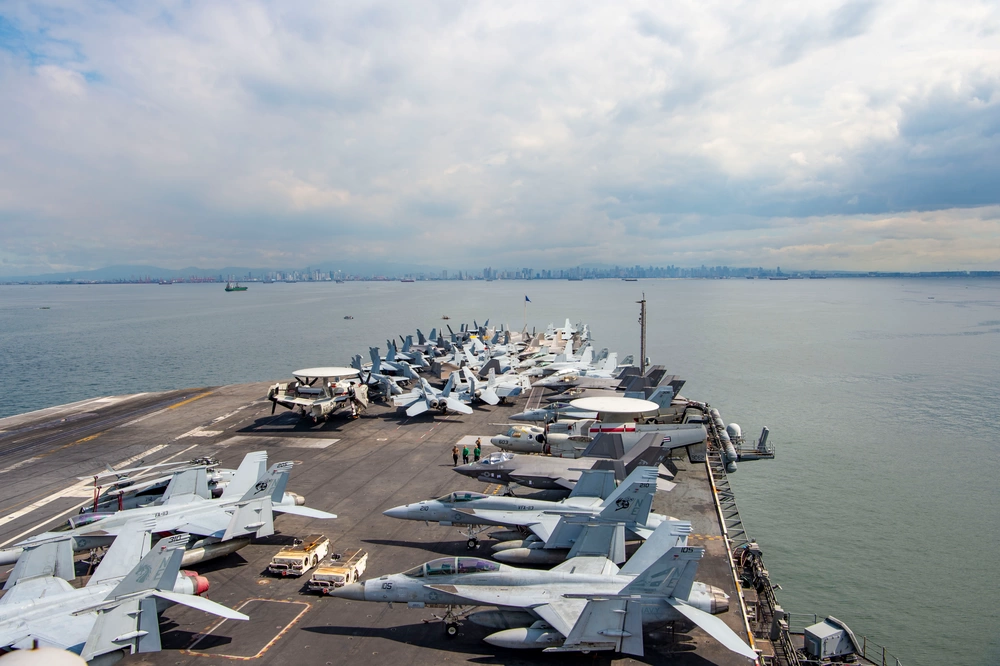US vessels arrive in Manila after sailing with PH Navy in SCS
The United States is flexing once again its military muscle in the Indo-Pacific with the port visit in Manila of one of its nuclear-powered aircraft carriers after sailing the South China Sea with the Philippine Navy.
USS Carl Vinson (CVN 70), a Nimitz-class aircraft carrier, arrived in the Philippines on Friday, Jan. 5, following a two-day Maritime Cooperative Activity (MCA) with three other US vessels and three Philippine vessels at sea to bolster regional security and stability.
In March and October 2023, US also flexed its muscle in Manila with the visits of USS America, an America-class amphibious assault, and USS Ronald Reagan, another nuclear-powered aircraft carrier.
Vinson was joined with other US vessels: the guided-missile cruiser USS Princeton (CG 59) and guided-missile destroyers USS Kidd (DDG 100) and USS Sterett (DDG 104).

The four vessels, along with embarked Carrier Air Wing (CVW) 2, formed this year's Carirer Strike Group (CSG)-1, which left the US in October 2022 for deployment to the Western Pacific.
"It is a pleasure for the Carrier Strike Group to visit the Republic of Philippines. The US and the Philippines are steadfast friends, partners in prosperity, and ironclad allies," Rear Adm. Carlos Sardiello, CSG-1 commander, said.
"Our two countries share democratic values, close cultural ties and our alliance has stood strong for over 72 years. As our oldest treaty ally in East Asia, the Philippines has shown their unwavering commitment in helping secure a free, open, peaceful, and prosperous Indo-Pacific region," he added.
According to the news website of the US Defense Department, the visit would mark "an additional demonstration of the US-Philippine Alliance, and broader commitment to the Indo-Pacific region."
"It also serves to fortify relationships with local leaders and communities, reaffirming the seven-decade-old Alliance between the U.S. and the Philippines," it said.
Meanwhile, China saw the activity as "provocative," even though it also led its own maritime activity in the area.
During their stay in Manila, sailors from CSG-1 will participate in cultural exchanges, community relations events, and Morale, Welfare and Recreation (MWR)-sponsored tours to enhance cultural understanding and cooperation between the two countries.
“By understanding and appreciating other cultural backgrounds, we can build stronger relationships, collaborate effectively and find common ground,” Capt. Matthew Thomas, Carl Vinson's commanding officer, said.
"“All of these are critical when it comes to supporting our allies and partners in the region," he added.
CSG-1 is a multiplatform team of ships and aircraft, capable of carrying out a wide variety of missions around the globe from combat missions to humanitarian assistance and disaster relief response. It is currently deployed to US 7th Fleet area of operations in support of a free and open Indo-Pacific.
U.S. 7th Fleet is the U.S. Navy’s largest forward-deployed numbered fleet and routinely interacts and operates with allies and partners in preserving a free and open Indo-Pacific region.